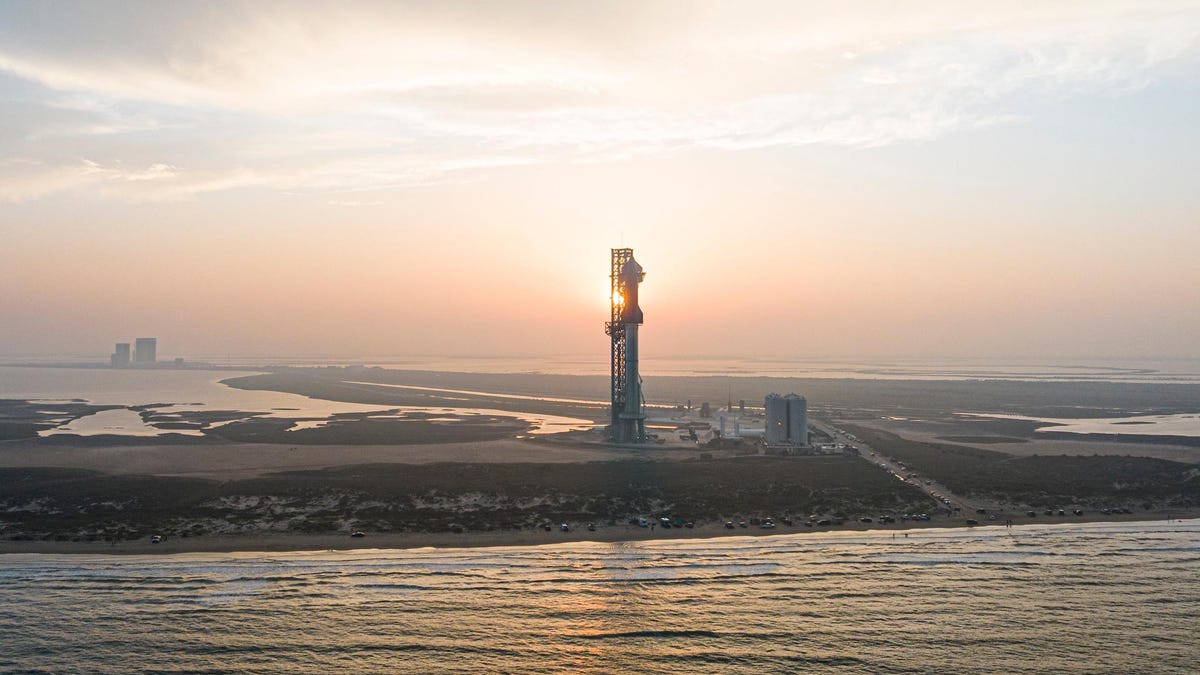
The largest rocket to ever take flight requires a substantial number of upgrades ahead of its second test flight, SpaceX CEO Elon Musk revealed this past weekend.
Musk made the comments on June 24 during a live Twitter discussion with Bloomberg journalist Ashlee Vance, saying “well over a thousand” changes are needed ahead of Starship’s second test flight, the date for which has not yet been set.
Advertisement
True to the company’s ethos to move fast and break things, the SpaceX boss is estimating a 60% chance of success for the upcoming test mission, having assessed a 50% chance of success for the first flight. A Starship prototype blasted off from SpaceX’s Texas launch site on April 20th, but it entered into a fatal tumble some four minutes into the flight and had to be destroyed.
The most notable adjustment to the 394-foot-tall (120-meter) Starship will be the switch to a “hot-staging approach,” Musk told Vance. Under this revised launch strategy, engines in the rocket’s upper stage will ignite prior to separating from the booster, in a move meant to improve performance.
Advertisement
Advertisement
“We made sort of a late-breaking change that’s really quite significant to the way that stage separation works,” Musk explained. “There’s a meaningful payload-to-orbit advantage with hot-staging that is conservatively about a 10% increase.”
Elaborating further, Musk said the strategy calls for the majority of the 33 booster engines to switch off prior to stage separation, and with some still active, all six Raptor engines on the upper stage will ignite while it’s still connected to the booster. This will prevent the temporary loss of thrust that traditionally occurs during stage separation, Musk said.
During Starship’s inaugural flight, the rocket fell into a tumble prior to stage separation. The ensuing self-destruct sequence did not unfold as planned, with the rocket finally exploding some 40 seconds after receiving the command. And without a flame trench or deluge system to quell the rocket’s fury at launch, Starship caused considerable damage at the pad, with dust falling some six miles from the launch site. The Federal Aviation Administration (FAA) grounded the rocket pending an investigation, and the FAA itself became the subject of a lawsuit, with conservation groups saying the launch should never have been allowed.
As a concept, hot-staging is nothing new; Russian rockets have been doing this for decades. That said, the switch is not subtle, requiring a serious adjustment to the booster. Specifically, the top of the booster will be fitted with an extension to shield the rocket from the super hot plasma coming off the upper stage engines, Musk said. The extension will include a series of vents, providing an outlet for the exhaust escaping from the upper stage and preventing the upper stage from annihilating the booster below. Said Musk: “This is the most risky thing, I think, for the next flight.”
Advertisement
Musk didn’t have much to say about the other required changes, but he did speak to the methane-fueled Raptor engines, of which a half dozen either didn’t ignite or failed during Starship’s inaugural launch. The doomed rocket was fitted with a “hodgepodge” of engines built at various times, he said, and a newly implemented fix to reduce leaking fuel should result in improvements, according to Musk.
He also provided an update about the launch pad and the various provisions being made to prevent a recurrence of the first, and very damaging, launch. Musk described the “steel sandwich” and concrete being constructed beneath the pad, which should “leave the base of the pad in much better shape than the last time.” A deluge system, which Musk compared to an upside down shower head, will also work to subdue the rocket, which exerts an astounding 16.5 million pounds of thrust at liftoff (assuming all 33 Raptors are working). Musk said the rocket will take off with a higher throttle next time, allowing for a quicker exit from the launch mount, giving the rocket less time to inflict damage.
Advertisement
No launch date was given for the second test flight. “A lot of variables here that are outside of our control,” said Musk—a likely reference to the pending FAA launch license. “We think, probably, the launch pad upgrades, and the booster and ship, are ready in about six weeks,” he added, in a typical Muskian over promise.
Regardless of when Starship might fly again, it’ll be fascinating to see how these and other adjustments will improve the heavy-lift rocket, which SpaceX will eventually use to transport crews, cargo, and spacecraft to various locations in the solar system.
Advertisement
Want to know more about Elon Musk’s space venture? Check out our full coverage of SpaceX’s Starship megarocket and the SpaceX Starlink internet satellite megaconstellation. And for more spaceflight in your life, follow us on Twitter and bookmark Gizmodo’s dedicated Spaceflight page.
Services Marketplace – Listings, Bookings & Reviews